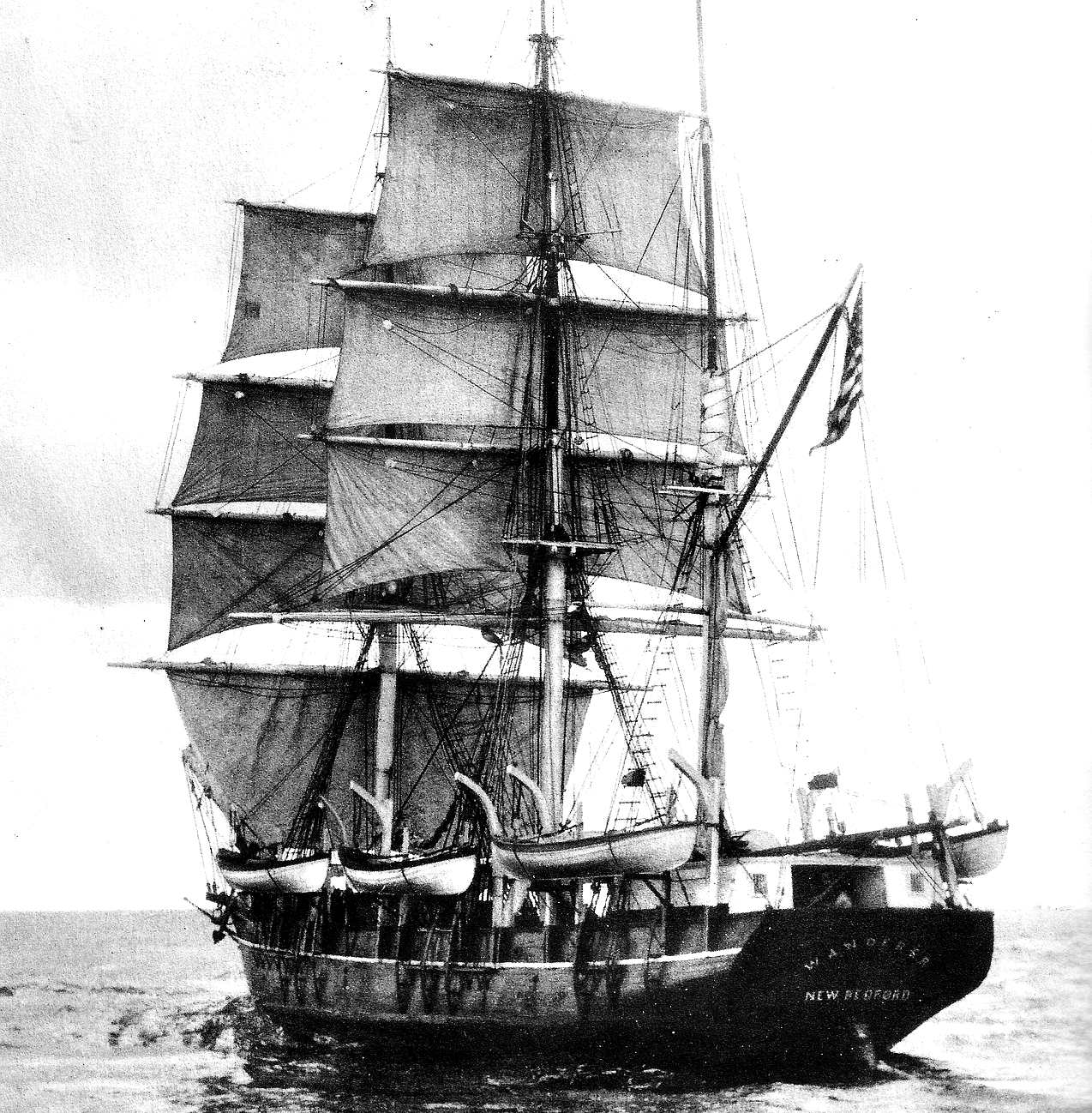
THE
ESSEX - This three-masted ship was made from white oak, especially
known for its strength, measuring 87 feet (26.5 metres) and just 239
tons displacement. There were 21 men on board, including first-time
captain, George Pollard, Jr.
On the 20th November 1820, a huge male sperm whale was spotted close to
the ship. It was estimated to be 85 feet long where a typical male was
no bigger than 65 feet.
The whale may have thought that the ship was another whale invading its
territory. Whatever its reason, the whale began speeding toward the
Essex, ramming the port side. After passing under the ship, the animal
resurfaced and appeared stunned. It then resumed its attack “with
tenfold fury and vengeance,” striking the bow and causing catastrophic
damage before disappearing.
The Essex capsized. The crew rowed for land, many of whom were
cannnibalized by the others over an 89 day voyage. Only two survived.
First Mate Owen Chase wrote: 'Narrative of the Most Extraordinary and
Distressing Shipwreck of the Whale-ship Essex' in 1821. Thomas
Nickerson, a cabin boy on the Essex, later wrote his account of the
sinking and rescue, but the notebook was lost and not published until 1984. Chase's work inspired
Herman Melville’s Moby Dick,
published in 1851.
The
giant white whale in Herman Melville's Moby
Dick is modeled on the notoriously hard-to-catch albino whale Mocha
Dick,
with the book's ending based on the dramatic account of the sinking of the whaling ship Essex in
1820 by Owen
Chase.
The
book by Herman Melville inspired Warner Brothers to make a film with John
Barrymore in 1930, followed by another, the Moulin production with Gregory
Peck in 1956,
also distributed by Warner Bros.
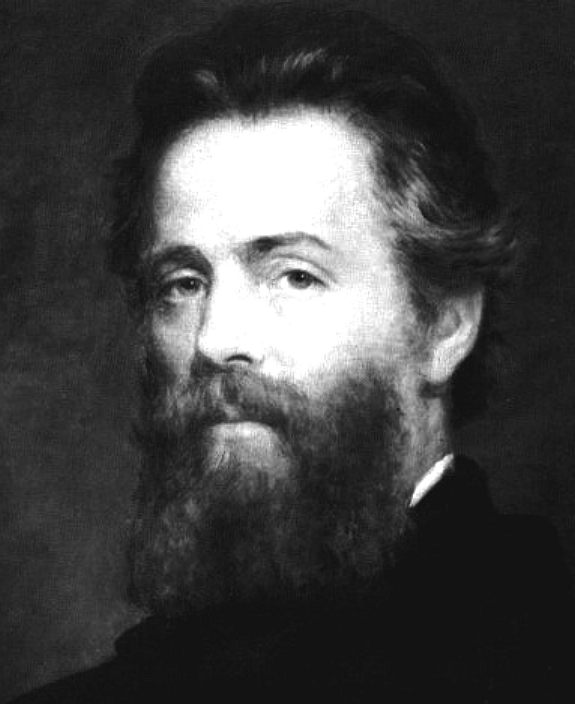
Herman
Melville
In 1820, a giant sperm whale, about 85 feet long attacked a whaleship named the Essex, causing her to sink. Her crew were left adrift in three whaleboats thousands of miles from land. One by one the men succumbed to starvation and dehydration until only eight of the original twenty men remained. They were rescued more than three months later. Seven of them had given up their lives so that the others could eat their bodies to stay alive. It’s a tale of unfathomable hardship and extreme desperation.
The
reason we don't hear of whales sinking whaling ships today is to do with
the modern weapons, and size of some whaling ships that deny a whale a
fair chance. In days gone by with whalers in rowing boats and hand held
harpoons, any rogue whale could smash the vessels of those chasing them.
Where
the boats were made of wood, a seriously large whale could sink the
parent whaling ship if really pushed and with adrenaline coursing their
veins from multiple harpoon strikes.
Put
yourself in the whale's position, if you were injured and could sink
your aggressor's means of attack, you'd probably give it a go.
2010
- 2015 BOOK AND FILM - IN THE HEART OF THE SEA
There
are two account of the sinking of the Essex, one by Owen Chase, and
another by Thomas Nickerson. These publications were the basis of a
novel by Nathaniel
Philbrick in 2010, later made into a film
starring Chris Hemsworth in 2015.
KULO
LUNA
Though
not a re-telling of the classic tale, in that the protagonist John Storm
is trying to save a giant whale called Kulo
Luna, rather than hunt it down, the concept of a whale sinking a whaling
ship such as the Essex, is at the heart of the Jameson Hunter story development, such that
it may please readers who are familiar with the original work of Herman
Melville. As a fictional work, it is at least soundly based on the
premise that a rust bucket could be sunk, if a cetacean had sufficient
cause to defend another whale.
|
SCENE
|
DESCRIPTION
|
LOCATION
|
|
|
|
|
|
Prologue
|
Shard
Protest
|
51° 30' N, 0° 7' 5.1312''
W
|
|
Chapter
1
|
Arctic
Melt
|
580
W, 750 N
|
|
Chapter
4
|
Sydney
Australia
|
330
S, 1510 E
|
|
Chapter
6
|
Bat
Cave
|
330
20’S, 1520 E
|
|
Chapter
8
|
Whale
Sanctuary
|
200
N, 1600 W
|
|
Chapter
10
|
Pirates
|
330
N, 1290 E
|
|
Chapter
13
|
Solar
Race
|
200
N, 1600 W
|
|
Chapter
14
|
Darwin
to Adelaide
|
130
S, 1310 E – 350 S, 1380 E
|
|
Chapter
15
|
Six
Pack
|
200
N, 1600 W
|
|
Chapter
16
|
Whaling
Chase
|
240
N, 1410 E
|
|
Chapter
20
|
Empty
Ocean
|
200
N, 1600 E (middle of Pacific)
|
|
Chapter
24
|
Billion
Dollar Whale
|
250
N, 1250 E
|
|
Chapter
26
|
Rash
Move
|
140
N, 1800 E
|
|
Chapter
27
|
Off
Course
|
150
N, 1550 E
|
|
Chapter
28
|
Shark
Attack
|
100
N, 1650 E
|
|
Chapter
29
|
Sick
Whale
|
100
N, 1650 E
|
|
Chapter
30
|
Medical
SOS
|
100
N, 1650
E
|
|
Chapter
31
|
Whale
Nurse
|
100
N, 1650 E
|
|
Chapter
33
|
Storm
Clouds
|
150
S, 1550 E
|
|
Chapter
34
|
The
Coral Sea
|
150
S, 1570 E
|
|
Chapter
36
|
Plastic
Island
|
20
S, 1600 E
|
|
Chapter
39
|
Media
Hounds
|
170
S, 1780E
|
|
Chapter
40
|
Breach
of Contract
|
200
S, 1520 E
|
|
Chapter
42
|
Fraser
Island
|
250
S, 1530 E
|
|
Chapter
43
|
Congratulations
|
250
S, 1530 E
|
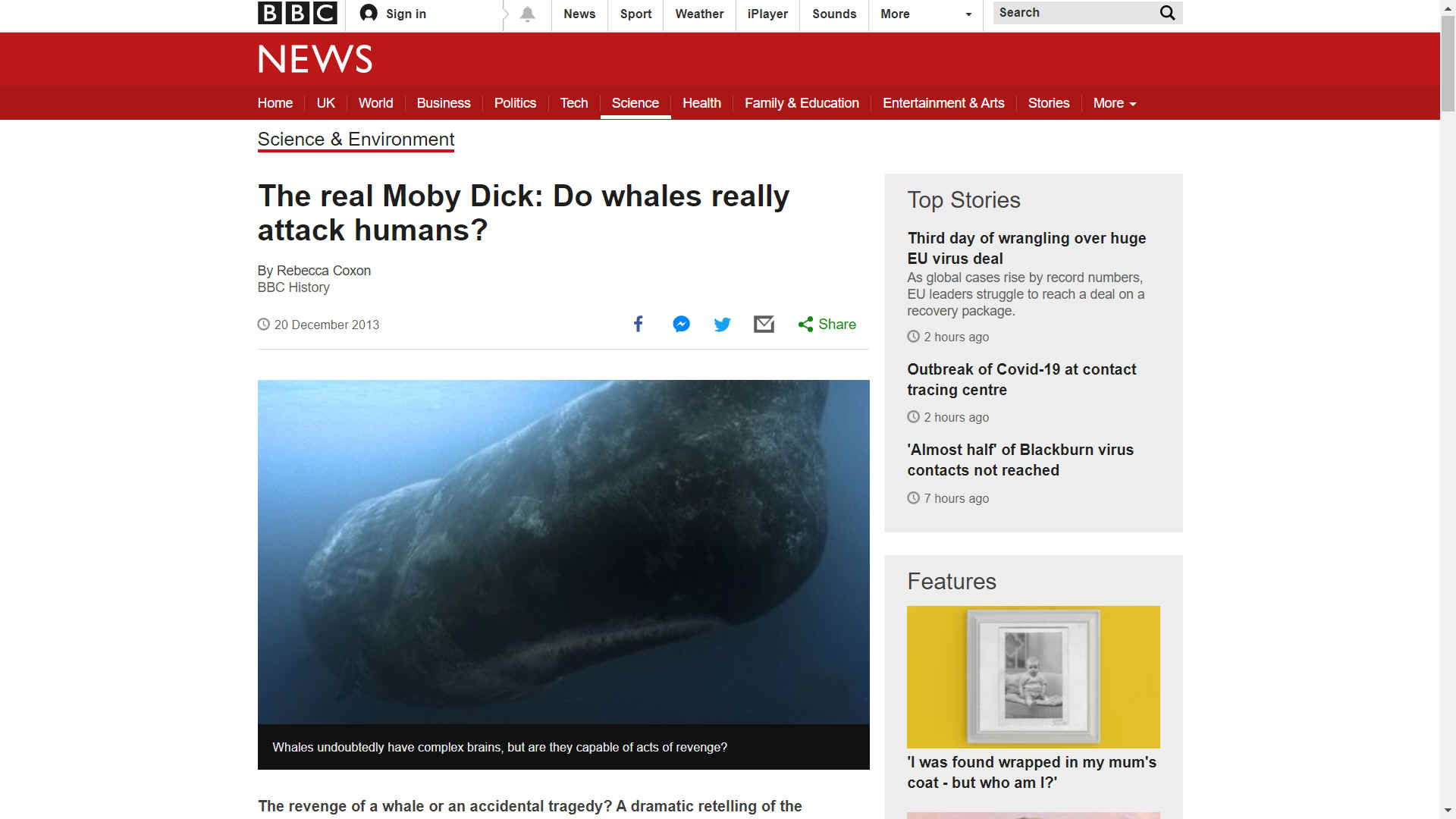
BBC:
THE REAL MOBY DICK - DO WHALES ATTACK HUMANS DEC
2013
The revenge of a whale or an accidental tragedy? A dramatic retelling of the story that inspired
Herman
Melville's classic novel will be hitting our screens on BBC One this Sunday - but do whales really attack humans intentionally?
Sperm whales are relatively placid mammals and very few incidents in modern times suggest otherwise. They mainly feed on squid and rarely attack, apparently only when mistaking other mammals for seals or prey.
In his 1839 book about the natural history of sperm whales, Thomas Beale, a surgeon aboard a whaleship, described them as "a most timid and inoffensive animal readily endeavouring to escape from the slightest thing which bears an unusual appearance".
But Dr Richard Bevan, a zoologist and lecturer at Newcastle University, suggests that a sperm whale may remember if it was previously attacked.
"I have no doubt that an individual would remember being harpooned and might respond aggressively if it thought that it was threatened," he said.
"On the other hand a large vessel like a whaling boat would probably look like a very large threat, even to a full grown sperm whale, so I'd have thought it more likely to have moved away."
But 19th century literature seems to suggest otherwise, with numerous stories of sperm whales attacking ships on purpose. But were they fuelled by threat, hunger or, as in Melville's classic novel, even revenge?
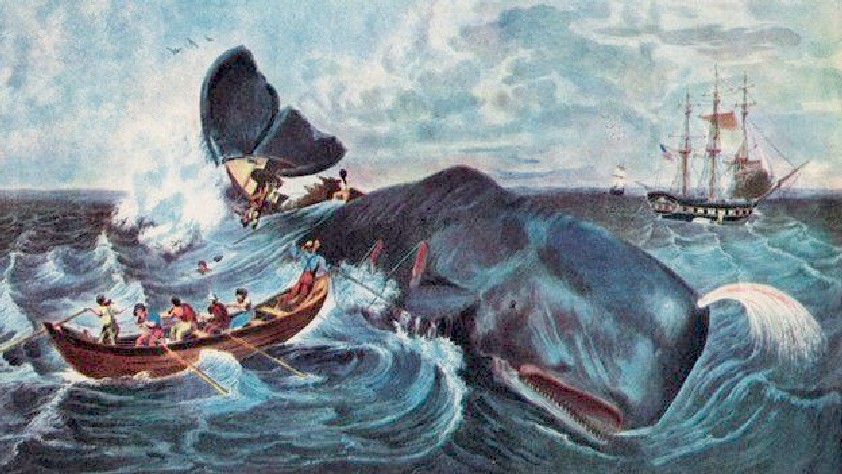
Whale Oil - Used to lubricate machinery and provide illumination by burning it in lamps.
Spermaceti Oil - Found in the skull. Prized and highly regarded oil. Waxy and commonly used in making candles. Candles made of spermaceti were considered the best in the world, producing a bright clear flame without an excess of smoke.
Baleen - A bone-like substance used in women's corsets, hairbrushes, buggy whops, collar stays and various other products. Sometimes called the 'plastic of the 1800's'.
Ambergris - Found in the bowels. Extremely rare and valuable, worth its weight in gold. Used as a perfume fixative, and was a profitable business for colonial exports.
In 1820, a giant sperm whale, apparently 85 feet long (the average is 50ft) attacked a whaleship named the Essex, causing her to sink. Her crew were left adrift in three whaleboats (lighter boats used in the capture of whales) thousands of miles from land.
Alone in the middle of the Pacific Ocean the men had to decide whether to head for the nearest islands, a thousand miles downwind to the west, or set out on an epic journey of almost three thousand miles to reach the South American mainland.
Fear of cannibals forced them to choose South America, but they never made it.
Of the 21 crew members aboard The Essex, just eight members of the crew were rescued after more than 80 days at sea; with an incredible tale of starvation, dehydration and unfathomable, mortal desperation to tell.
Two members of the crew wrote accounts of the failed voyage. First mate Owen Chase's account was a widely circulated story of the time, published just months after his return home. The other, written by cabin boy Thomas Nickerson 50 years later, was not published, but, remarkably, was discovered in an attic in 1960, 80 years after Nickerson's death.
Their accounts differ in places, but what is indisputable is that they both recall exactly how their supposedly "lucky" ship sank. It was stove by a giant whale.
Herman Melville heard this story, met with the captain of the Essex and was inspired to write his classic novel
Moby
Dick.

Moby Dick was actually named after a real whale,
Mocha
Dick, first spotted by sailors in the 19th century near the island of Mocha, near southern Chile. Whales were often given pet names by sailors, Tom and Dick were common - though there are no accounts of a Harry.
Mocha Dick was an albino whale, described by explorer Jerimiah N Reynolds as "an old bull whale of prodigious size and strength… white as wool". Legend has it that it killed 30 men and was covered in scars and punctured with spears from previous attempts to harpoon it; before eventually being slaughtered in 1838.
Sometimes described as Leviathans, sperm whales truly are creatures of
mythical proportions. They have the largest teeth of any whale and live
to be more than 60 years old. They can dive deeper than any other sea
mammal (around 3km) in order to catch their favourite deep sea food, the
elusive squid.
Whaling in the 19th century was a lucrative business as whale oil became immensely valuable for lighting oil lamps and making candles and soaps. More than 900 whaleships were out to sea in the mid-1800s, hailing mainly from American ports, with an average voyage length of three or four years.
By the mid 19th century, whale numbers were depleting rapidly. But with the discovery of petroleum in Pennsylvania in 1859, the American whaling industry had almost completely disappeared by the start of
World War I.
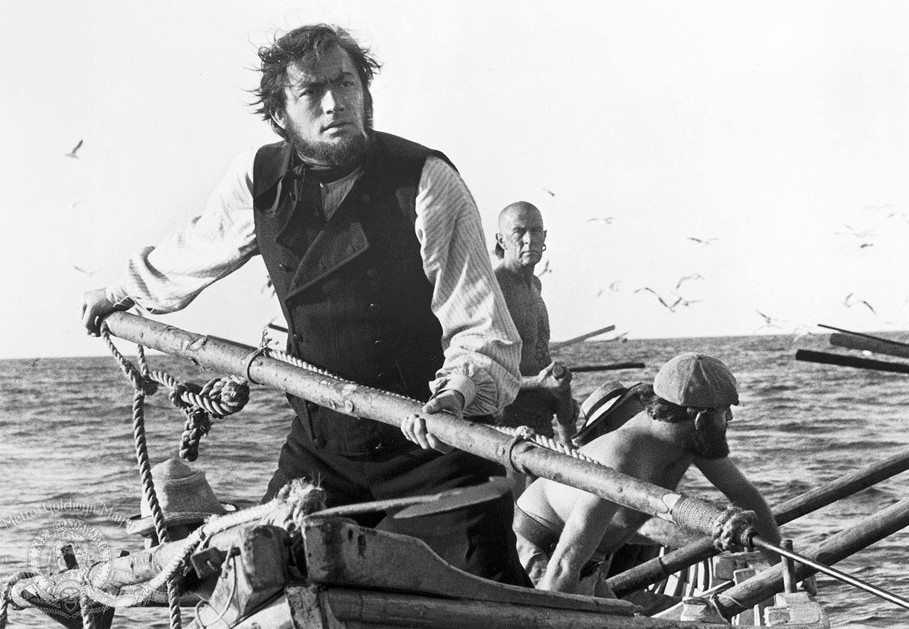
Please use our
A-Z INDEX to
navigate this site





